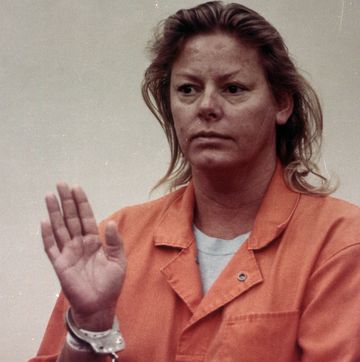Key Takeaways:
- A New York judge ruled DNA evidence obtained from a cutting-edge technique can be used in the upcoming trial of Gilgo Beach murder suspect Rex Heuermann.
- DNA-based identity testing was discovered by accident in 1984 and first used in a murder case in 1987.
- DNA testing methods continue to advance, and the Gilgo Beach case could mark a new era for finding criminal suspects.
A New York judge has allowed crucial DNA evidence in the trial of Gilgo Beach murder suspect Rex Heuermann, a decision that could fundamentally change how criminal profiling is used in court.
Heuermann, 61, is accused of killing seven women on Long Island between 1993 and 2011. Police arrested him in July 2023 after DNA obtained from rootless hairs on six of the victims provided a link to the architect, who has denied his involvement.
It’s the first time DNA technology known as whole genome sequencing has been allowed as evidence in New York state court. The method is relatively new, but prosecutors in the case point to its use by FBI and local law enforcement elsewhere in the nation to affirm its reliability.
The precedent for DNA testing in criminal cases was established nearly four decades ago, when investigators used the tool in its infancy to find an elusive killer in the United Kingdom. His name was Colin Pitchfork.
A British scientist discovered DNA fingerprinting in 1984
The genesis of DNA profiling is found in the 1984 lab of geneticist Alec Jeffreys, who discovered its capabilities by accident. Working at the University of Leicester in the United Kingdom, Jeffreys was studying how illnesses are passed through families when he extracted DNA from cells belonging to subjects including his lab technician and her parents. He discovered the subsequent samples attached to film could help identify individuals with great precision, offering a DNA “fingerprint” of sorts.
Jeffreys quickly realized the results had the potential to help a variety of fields, including paternity testing and forensic investigations. “The last thing on our mind was forensic identification. That never occurred to us, and I think not to anybody else in the field at that time. Forensic DNA simply wasn’t on anybody’s radar,” Jeffreys said. “So this was a very exciting moment where, literally, my entire life changed in the space of about 60 seconds.”
The discovery came at a crucial time for British police, who were investigating the rape and murder of two 15-year-old Leicestershire County girls: Lynda Mann in 1983 and Dawn Ashworth in 1986.
DNA profiling helped identify Colin Pitchfork as a killer
After Ashworth’s remains were discovered, police arrested 17-year-old Richard Buckland and interrogated him about the crime. The Guardian reported that Buckland, who had an intellectual disability, confessed under questioning before withdrawing his admission. He was charged with Ashford’s murder but outright denied involvement in the Mann killing.
To get a definitive answer, authorities asked Jeffreys to test blood and semen samples found on the victims’ bodies. His methods confirmed that Buckland was not responsible for either murder, and the young suspect was released after three months in custody.
Back at square one, police decided to use DNA profiling to their advantage in January 1987. They sent letters to every man born between 1953 and 1970 who lived or worked in Narborough village and requested a blood sample. Within eight months, more than 5,000 men had complied; however, no match was found.
Then in August 1987, key information emerged. A bar patron identified as “Kelly” confessed he had impersonated his co-worker, 27-year-old Colin Pitchfork, in order to submit a false blood sample. Pitchfork altered his passport with Kelly’s picture and waited outside during his test.
Police arrested both men and, upon apprehension, Pitchfork admitted to both killings and two additional sexual assaults. “Opportunity. She was there, and I was there,” he reportedly said of Ashford’s murder. DNA testing confirmed Pitchfork was, in fact, responsible. He pleaded guilty to both murders and was sentenced to life in prison in January 1988.
Whole genome sequencing gives more detailed results
The whole genome sequencing at the center of the Gilgo Beach case is much more precise than the testing used in Pitchfork’s case. Daniele Podini, an associate professor at George Washington University, told CNN the process “attempts to read nearly all of a person’s DNA, covering the entire genetic code of about 3 billion bases,” rather than a small genetic fingerprint.
The technology is already common in other scientific areas including virology and healthcare, but there is little precedent for its use in high-profile crime cases. In 2024, a California jury convicted Adrian Chavez on two counts of first-degree murder using evidence from next-generation sequencing, which processes millions of DNA fragments at once and can form a basis for WGS. This marked the first time such evidence was introduced at an American jury trial.
The California-based company Astrea Forensics performed the DNA sequencing used to find Heuermann, who has pleaded not guilty to all charges. A start date for his trial hasn’t been scheduled, and it remains to be seen what a jury will decide.
Still, Wednesday’s ruling suggests whole genome sequencing technology will be used more in the future. “This decision and this litigation marks a significant step in forensic DNA analysis,” prosecutor Raymond Tierney said. “This is where we’re headed in the science.”
Tyler Piccotti joined the Biography.com staff as an Associate News Editor and is now the News and Culture Editor. He previously worked as a reporter and copy editor for a daily newspaper recognized by the Associated Press Sports Editors. In his current role, he shares the true stories behind your favorite movies and TV shows and profiles rising musicians, actors, and athletes. When he's not working, you can find him at the nearest amusement park or movie theater and cheering on his favorite teams.















